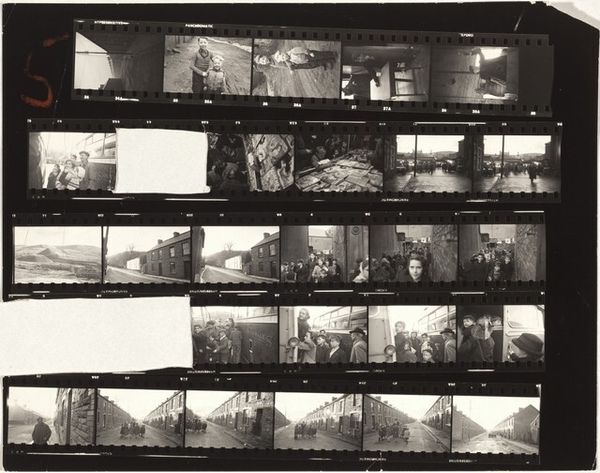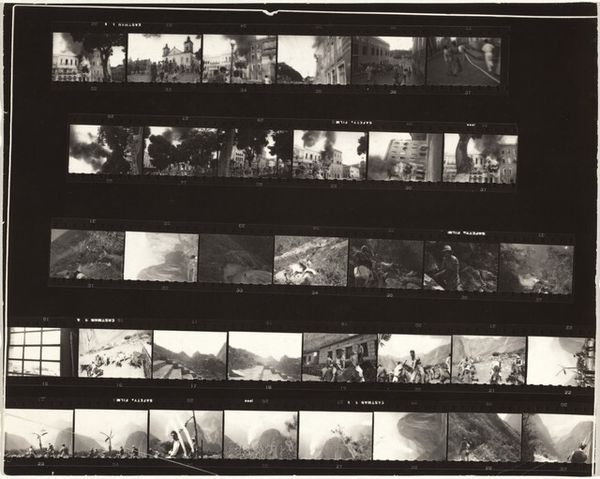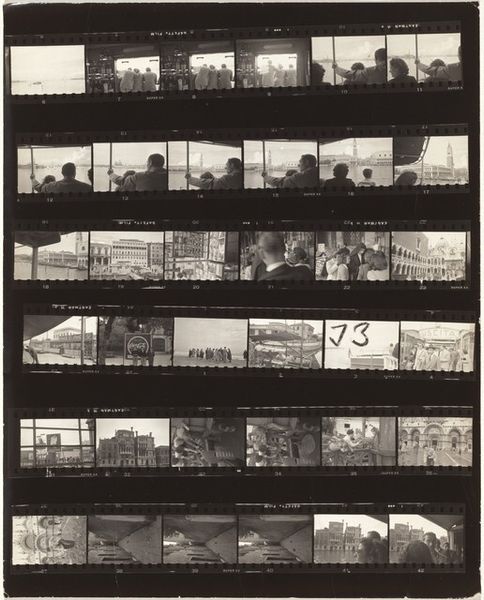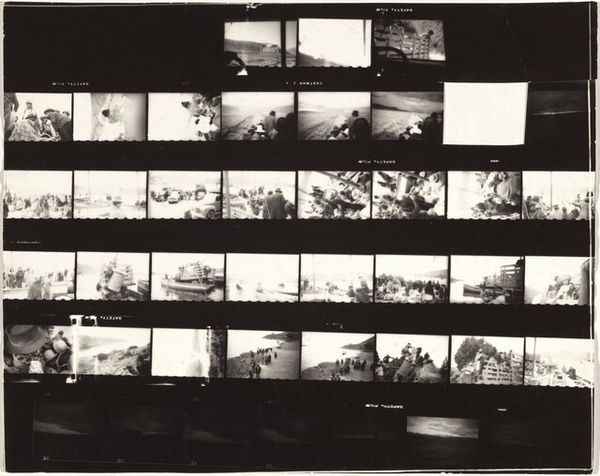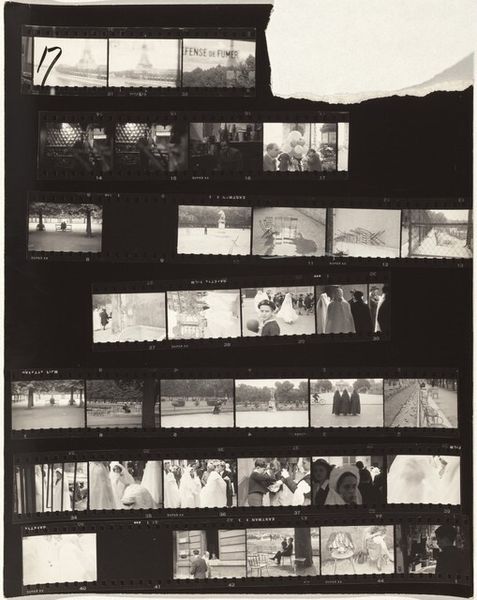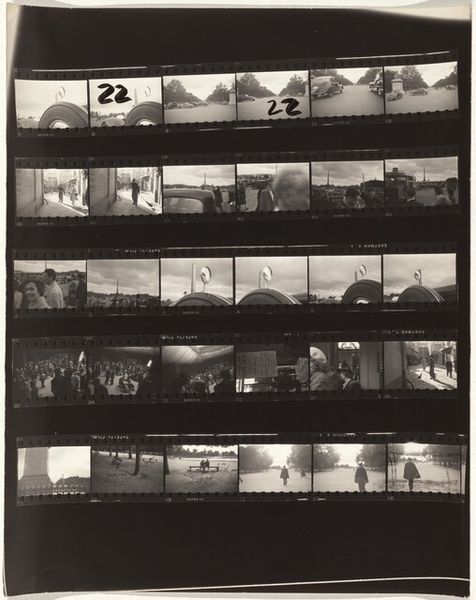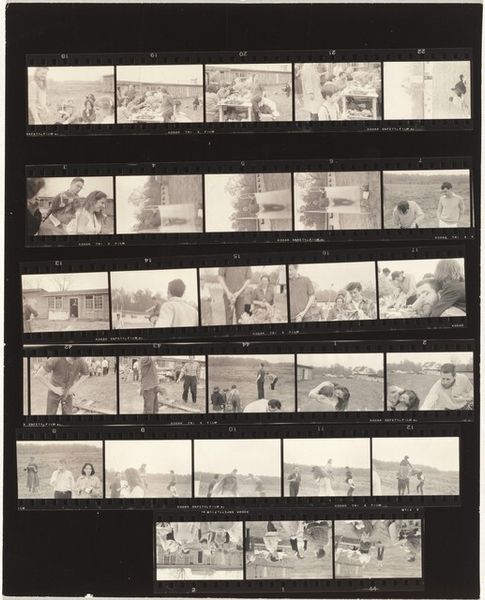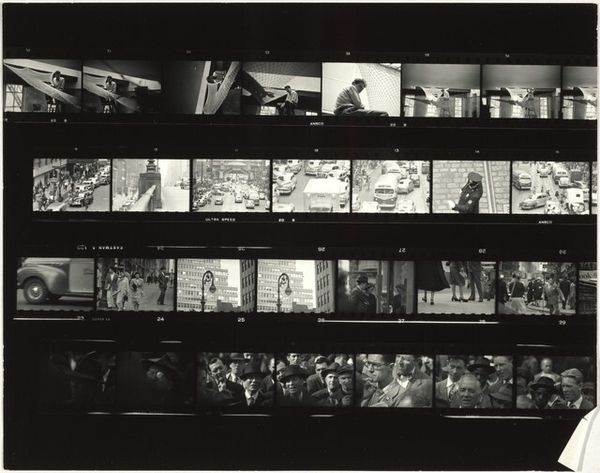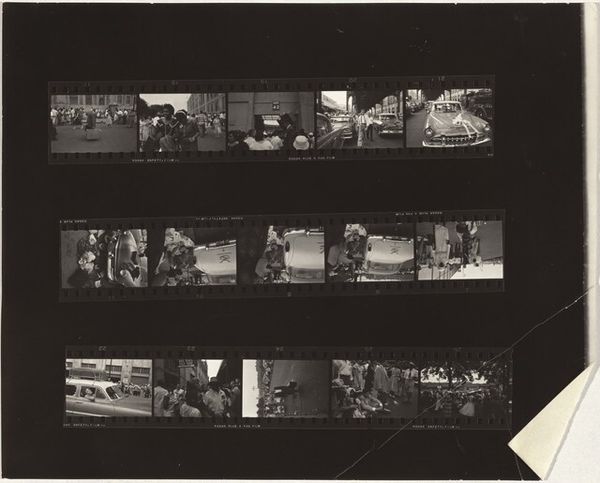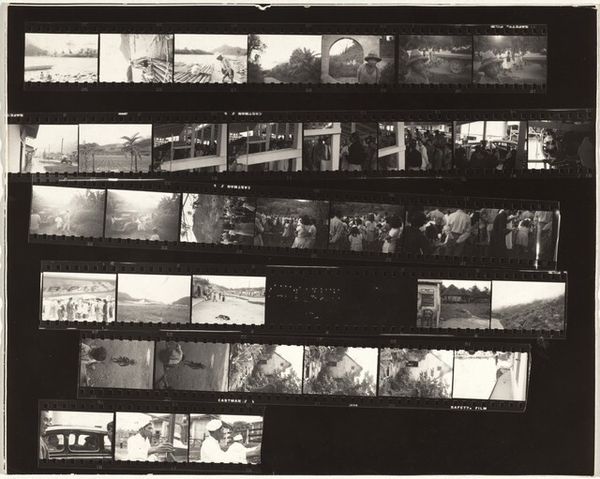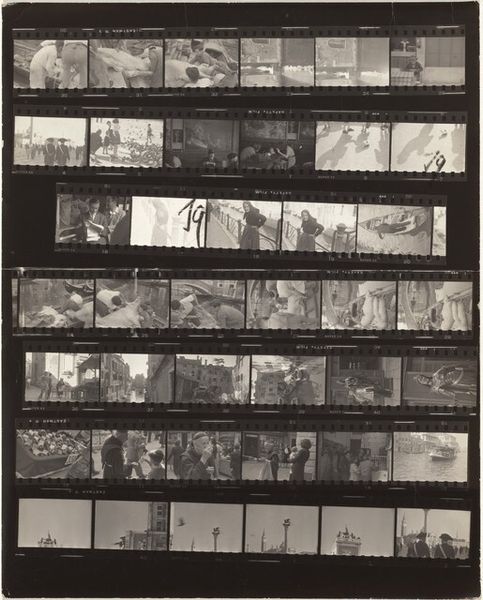
photography
#
film photography
#
landscape
#
archive photography
#
street-photography
#
photography
#
monochrome photography
#
film
#
monochrome
Dimensions: sheet: 23.8 x 29.9 cm (9 3/8 x 11 3/4 in.)
Copyright: National Gallery of Art: CC0 1.0
Curator: So, what are your initial impressions of Robert Frank’s “South America and Spain 20” from 1948? It's a photographic work, contact sheets of small black and white images. Editor: Well, the layout itself strikes me as very different – I'm not used to seeing the artist's process laid bare like this. There's something haunting about the glimpses into different cultures all on a single sheet. What do you see in this piece? Curator: For me, these contact sheets aren’t just about documenting travel; they're a critical engagement with the socio-political landscape of post-war identity and representation. Frank is wrestling with how to frame and, by extension, control these narratives. Who is allowed to look, and who gets to be seen, becomes the central question. Consider the positioning of "South America" and "Spain" within the title—how does it reflect the complicated colonial legacy and cultural exchanges still resonating in the 1940s? Editor: I hadn't considered that directly, but that colonial echo definitely shifts how I see the individual photographs. There's almost an anthropological lens there, with all the ethical implications that implies. Curator: Exactly. Are we viewing cultural exchange, or a continuation of extraction? The close-ups, particularly, force us to confront the humanity within each captured image, almost resisting the broader narratives imposed by colonial structures. It urges us to consider the gazes, the power dynamics implicit in photography. Editor: It's a really complex layering of visual information, then, reflecting complex histories and ongoing power struggles. I’m starting to think this piece demands active participation, like we’re sifting through evidence. Curator: Precisely! We're asked to become critical participants in interpreting Frank’s experiences. Ultimately, the artwork isn’t about passive viewing, it is about questioning what and how we are seeing. Editor: I now feel this piece urges a critical self-awareness when interpreting photographic narratives. Thank you for offering such an interesting framework!
Comments
No comments
Be the first to comment and join the conversation on the ultimate creative platform.
